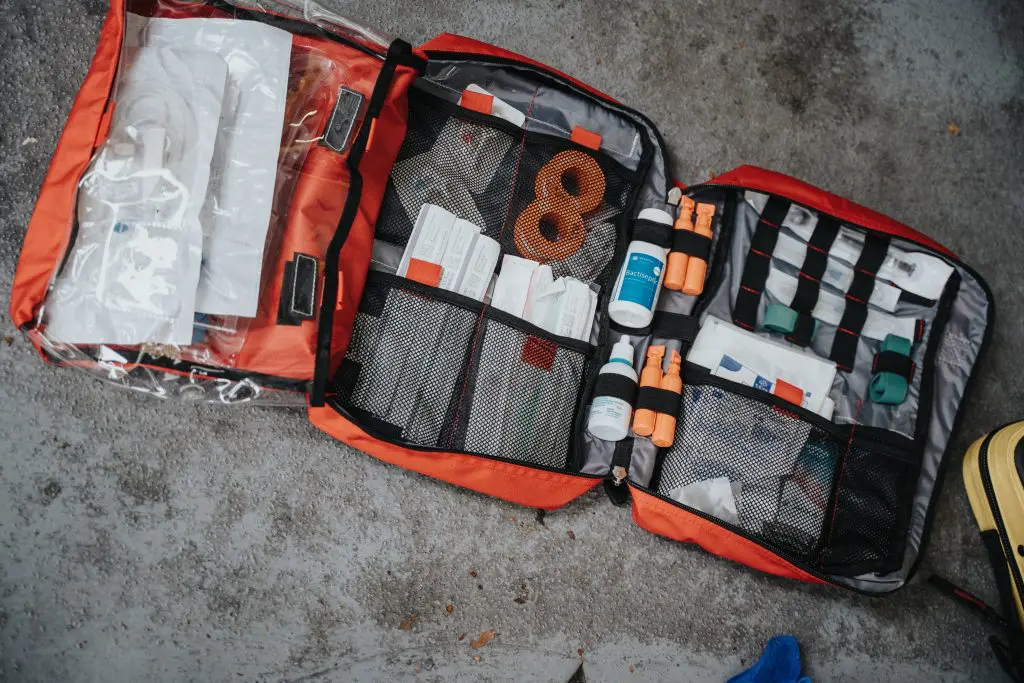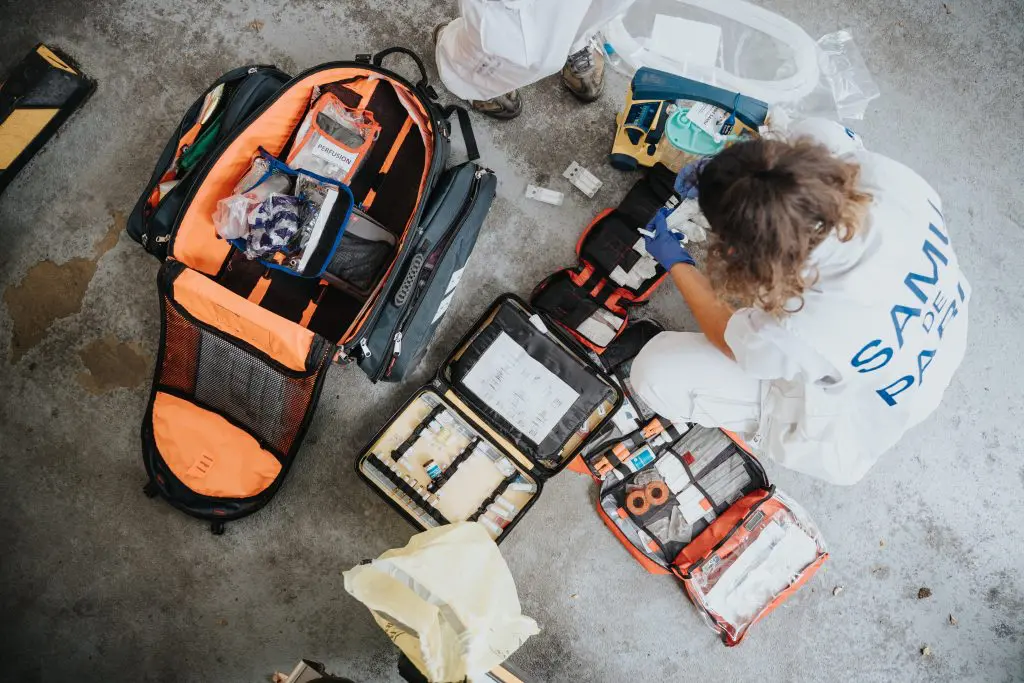Hiking is one of the most fun outdoor activities. It combines rigorous exercise with the great outdoors and allows for an escape from the mundane and day-in, day-out living of modern life. In addition, hiking allows for an escape from our technology bound lives and allows us to connect with nature directly.
However, while hiking is a great exercise and means to escape into nature, it can also be a dangerous one. That is why, below, we are going discuss the importance of carrying a first aid kit while hiking.
We will not only review why it’s so important to carry a first aid kit while you hike but will also discuss the best first aid kits to purchase online for your next hike or what medications and items to bring with you on your next hike that can supplement or replace a first aid kit.
Preparing for an Upcoming Hike
Preparing for a hike, particularly a long-term one, requires some effort and preparedness. It is not as simple as choosing some hiking boots and clothing. Rather, you will need to prepare adequately to ensure you have a fun and enjoyable experience. In addition, proper preparedness will help you to avoid common hiking pitfalls and issues that may occur along your trip.
When it comes to preparing for an upcoming hike, there are a few circumstances you will need to take into consideration.
- Choosing a Hiking Trail – admittedly the most important aspect of preparing for an upcoming hike is choosing a proper hiking trail. And while there are a plethora of options to choose from, from the national parks to local trails within your neighborhood, you should choose a hiking trail that you are comfortable completing and one that is within your hiking experience range.
- Bring Hiking Buddies – whether you’re bringing along some close friends, your kids, or your four-legged best friend, bringing other people, or animals, along on a hike is not only a great way to socialize while hiking, but is also a great way to help with navigating the trail and carrying supplies to the campsite.
- Pack Appropriate Hiking Items – whether you’re going on an overnight hike or a 7-day one, you will need to pack appropriate hiking items with you. This not only includes a camping tent, clothing, and a sleeping bag, but also appropriate food items to ensure adequate sustenance and nutrition.
Disclaimer
Please note, we here at Ball Are Life are a part of the Amazon Associates Program. This means we may receive a small commission from any purchases via our links below. This is at no additional cost to you. However, while we do appreciate the additional commission, we never recommend or review any product which we personally wouldn’t recommend.

Why is a First Aid Kit Necessary?
Hiking, as with any other form of exercise, comes with certain risks and cautions. However, as compared to other forms of exercise, whether completed in a gym or on a court or field, hiking is a form of exercise which is completed in the great outdoors and generally completed alone and without quick, easy access to medical professionals and help.
For this reason, it is not only recommended to bring along a first aid kit, but almost a necessity to. Hiking, whether alone or with a group, can be dangerous and without quick, easy access to a medical facility, injuries and life-threatening ailments will need to be handled and remedied on the spot.
Similarly, hiking can lead to a wide range of injuries, from cuts and scrapes to large wounds, burns, and bites. In addition, blisters, sun burn, dehydration, and hypothermia are all additional injuries that can be sustained while on a hike.
These injuries, many of them being life-threatening, will need to be tended to immediately. However, it is also a best practice to carry a GPS or Satellite Communication Device with you on your hike. In the case of life-threatening injuries, a GPS Communication Device will allow you to call to the nearest medical facility for immediate transportation from your location.
Best First Aid Kits on the Market
When it comes to preparing a first aid kit for your next hike, you generally have one of two options, either to purchase a ready-made first aid kit or to assemble your own. While purchasing a ready-made first aid kit is more convenient, many of these first aid kits may not have all the items you will need.
That is why it is so important to assess your specific needs and confirm that the first aid kit you are looking to purchase includes all the items you will need.
Personally, we are huge fans of the Homestock+ First Aid Kit. Well-stocked with the most important and necessary items, the Homestock+ First Aid Kit contains a plethora of supplies, each labeled in individualized compartments. In addition, each supply contains a user-guide, providing you with comprehensive instructions for each item and how to properly use.
In addition to the Homestock+ First Aid Kit, we’ve used and recommend. The Adventure Medical Kits Mountain Series Guide Medic Kit. Easy to carry and stocked with all the necessary items, this medic kit opens into six individualized compartments to handle specific injuries. Ranging from wound/burn/blister care to medications to supplies to stop bleeding fast, this kit will keep you safe and healthy no matter what you encounter on your hike.

Building Your Own First Aid Kit
If you are looking to build your own first aid kit, whether to save some money or to ensure proper supplies on your specific journey, be sure to include the basics we’ve outlined below. These items should be included in every first aid kit and will provide you with greater security as your trek across the great outdoors.
In addition, you should also include specific instructions for each item included in the first aid kit. This will help not only yourself, but others on the hike with you, to properly utilize and administer the specific aid.
- 2 absorbent compress dressings (5 x 9 inches)
- Use Case – absorbency for heavily draining wounds
- 25 adhesive bandages in assorted sizes
- Use case – medical grade polyester fabric which seals on all four sides to keep out germs and dirt
- 1 adhesive cloth tape
- Use case – keep wounds dry and clean
- 5 antibiotic ointment packets
- Use case – helps to prevent infection
- 5 antiseptic wipe packets
- Use case – clean and disinfect hands
- 1 assortment of over-the-counter medications
- Use case – includes medication for common ailments, including fever, pain, headache, traveler’s diarrhea, nausea, dizziness, upset stomach, allergies, and dehydration
- 1 emergency blanket
- Use case – designed by NASA, Mylar blankets are highly insulated and reflect 90% of your body’s heat, protecting you from the cold.
- 1 breathing barrier
- Use case – minimize the risk of mouth-to-mouth contact during CPR
- 1 instant cold compress
- Use case – for sprains or muscle soreness, instant cold compress will allow you to place a cooling packet on the specific spot to ease the pain
- 4 pairs of nonlatex gloves
- Use case – remain safe while administering first aid or coming into contact with bodily fluids
- Assorted gauze packs
- Use case – for dressing minor cuts, scrapes, and burns
- 1 oral thermometer
- Use case – assess an individual’s temperature with ease
- 1 set of tweezers and shears
- Use case – remove splinters and cut clothing to access wounds
- 1 flashlight
- Use case – provide illumination, particularly during the night
